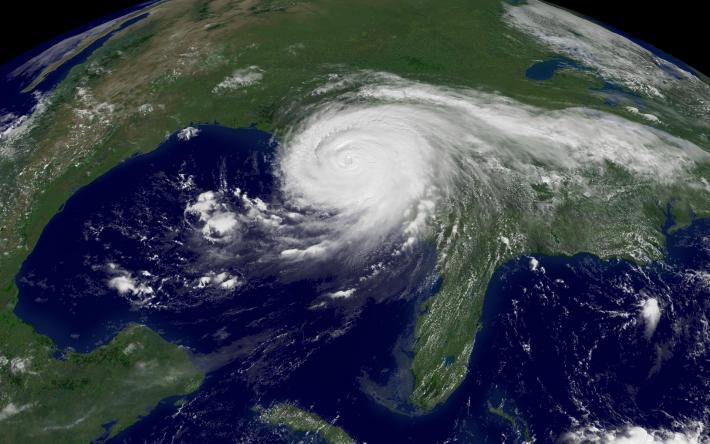Wind

When the temperature of the air rises up due to the Sun’s heat, the air becomes lighter and rise up high towards the sky. Cold air, being heavier than the warm air, descends lower towards the earth. These movements of hot and cold air take place in the atmosphere and are continuous. When the hot air rises, cold air descends lower and takes the place of hot air. This movement of hot and cold air leads to the formation of the wind.
By studying the formation of the wind, weather experts can predicts weather conditions in different parts of the world. Satellites show the /images of the Earth’s surface as covered by masses of cloud in constant movement. These /images are very useful in predicting the direction of wind.

Winds blow from areas of high atmospheric pressure o those of low pressure. There is low pressure around the equator and at the Arctic and Antarctic circles and high pressure near the tropics.
Types of Winds
Three broad categories are:
- Regular Winds: Also known as Prevailing winds and Planetory winds. Ex: Trade winds, Westerlies, Polar Easterlies.
- Periodical Winds: These are the winds which blow seasonally. Ex: Monsoons.
- Variable Winds: Cyclones and other local winds are known as variable winds.
Trade Winds
These are steady currents of air blowing towards equatorial low pressure from North Eastern and South Eastern subtropical high pressure area 30°N and 30°S. Trade in German means ‘Track’. To blow ‘trade’ means to blow steadily in the same direction.
Westerlies
It blows from subtropical high pressure to sub-polar low pressure belt between 30° and 60°, on either side of equator.
It is also known as roaring Forties or Furious Fifties and Shrieking Sixties in the Southern Hemisphere as they gather force in absence of any land mass.
Polar Easterlies
It moves from high pressure to sub-polar low pressure areas. These are deflected by the Earth’s rotation to become East winds or Polar Easterlies.
Monsoons
It blows over and above the Indian Ocean. In winter monsoon blow from the vast Asiatic landmass towards the Indian Ocean, while in their direction reverses itself. Summer monsoons account for most of rainfall in India.
They blow from the sea to land in summer and in winter it blows from land to the sea.
The Jet-Stream
The jet stream is system of upper air Westerlies. It gives rise to slowly moving upper-air waves. In the upper-air waves are some narrow zones in which wind velocities up to 250 knots are observed in some air streams. This phenomenon is called Jet Stream.
They develop just below the tropopause over areas of very steep pressure gradient on the surface.
Land and Sea Breezes
Land gets heated sooner than water and it also cools down faster than sea. Thus during day time land is hotter than sea while at night the reverse is the case.
Heat decreases pressure. Due to low pressure on the land Winds start to blow from sea towards land during the day and from land to sea during the night. These are respectively known as the Sea breeze and the land breeze.
